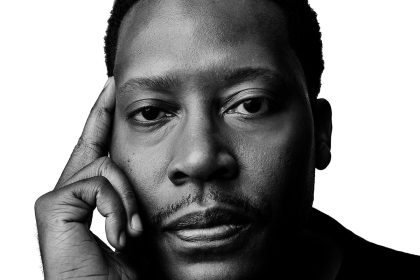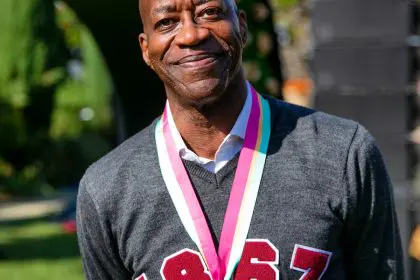The distance between a five-year-old’s first acting camp in Kansas City, Missouri, and a breakout role in an independent film might seem vast, but for Lena B. Jackson, each step along that path was deliberate, methodical, and informed by an understanding that craft requires both time and courage. Her trajectory from childhood performer to the commanding presence audiences remember in “Jonesing: When Love Is a Habit” illustrates how artistic development unfolds not in sudden bursts of inspiration but through sustained attention to fundamentals.
Jackson’s story begins with the kind of parental foresight that recognizes talent before it fully understands itself. Enrolled in acting camps and summer theater programs as a child, she was immersed in performance before she could articulate what drew her to it. This early exposure established patterns that would prove crucial later: the comfort with being observed, the willingness to inhabit different personas, and perhaps most importantly, the understanding that performance is both individual expression and collective endeavor.
The discipline of movement
What distinguishes Jackson’s approach to acting is her foundational understanding of the body as an instrument of storytelling. Her decade of dance training provides more than physical grace; it offers a systematic method for approaching character construction. “How does this character walk? How do you want this character to walk?” she asks, articulating a consciousness that many actors develop intuitively, if at all.
This attention to physicality reflects a sophisticated understanding of how audiences process information. Before a character speaks, before they reveal their intentions through dialogue, they communicate through posture, gesture, and movement. Jackson’s dance background taught her to think cinematically about the body, to understand how small adjustments in bearing can communicate large shifts in emotion or intention.
The integration of dance training into dramatic work also provides Jackson with what she calls “acting within dancing.” This cross-pollination of disciplines creates performers who understand storytelling as a full-body endeavor. When she describes bringing “all the way” her physicality to the role of Mina Moore, she’s describing an approach that refuses to separate intellectual understanding from embodied expression.
Her awareness of how gesture communicates extends to the minutiae of interaction. She considers not just how a character walks but “how they shake people’s hands, how they look at people, how they turn their head.” This granular attention to physical detail creates what audiences experience as authenticity, the sense that they’re observing a complete person rather than someone performing predetermined actions.
The conservatory effect
Jackson’s decision to pursue formal training at the New York Conservatory for Dramatic Arts represents the kind of commitment that distinguishes professional artists from talented amateurs. The move from Kansas City to New York in 2020, combined with the rigor of conservatory training, signals an understanding that natural ability requires structured development.
The conservatory experience provides more than technique; it offers exposure to diverse approaches to craft. Jackson’s reference to “the technique that I was taught in school” when discussing emotional preparation suggests someone who has internalized multiple methodologies. This technical foundation becomes crucial when facing the kind of challenging scenes that require sustained emotional availability.
Formal training also provides perspective on the relationship between personal experience and performance. Jackson’s willingness to access her own grief for a crying scene, followed by her recognition of the dangers inherent in that approach, reflects the kind of self-awareness that conservatory programs aim to develop. The ability to evaluate one’s own process critically is perhaps as valuable as any specific technique.
The transition from conservatory student to working professional involves not just the application of learned skills but their adaptation to real-world circumstances. Jackson’s description of her collaboration with director Sixx King suggests someone able to balance preparation with spontaneity, technique with intuition.
The Kansas City foundation
While New York provided professional training, Jackson’s Kansas City origins established the values that inform her approach to work. Her description of herself as someone who “takes the first flight out” to help friends reflects the kind of reliability and commitment that Midwestern culture traditionally emphasizes. This background becomes crucial in understanding how she approaches both friendship and professional relationships.
The musical theater experience of her high school years provided exposure to the collaborative nature of performance. Unlike film, where scenes are shot out of sequence and actors may work primarily with small groups, musical theater requires sustained ensemble work. This experience likely contributed to Jackson’s ability to form quick, authentic connections with her “Jonesing” co-stars.
Her Jamaican-American heritage adds another layer to her artistic identity. While she doesn’t elaborate extensively on this cultural background in discussing “Jonesing,” the intersection of different cultural perspectives often provides actors with a broader emotional and experiential palette from which to draw.
The method behind vulnerability
Jackson’s approach to emotionally demanding scenes reveals both ambition and self-awareness. Her decision to use Michael Jackson’s “Gone Too Soon” to access grief demonstrates someone willing to take significant emotional risks for her craft. The choice of that particular song, a meditation on premature loss, suggests deliberate selection of stimulus material rather than random emotional manipulation.
What’s most revealing about her description of this process is her simultaneous immersion in and observation of her own emotional state. She describes being “in tears bawling” while also maintaining enough awareness to think, “Lord Jesus, Lena, what were you thinking?” This dual consciousness, feeling fully while observing that feeling, characterizes sophisticated performers.
Her recognition that she could “bring herself back” from emotional extremes suggests someone developing mastery over her own psychological processes. This kind of emotional intelligence becomes crucial for actors who must repeatedly access difficult feelings without being overwhelmed by them.
The acknowledgment that she might “go about it differently” next time reflects the kind of thoughtful self-evaluation that characterizes professional growth. Rather than simply repeating what worked, she’s analyzing the costs and benefits of her approach, preparing to make more informed choices in the future.
The expansion of possibility
Jackson’s experience with Mina Moore illustrates how prepared actors can capitalize on unexpected opportunities. Her ability to transform a one-page role into what she describes as “a full force” required not just talent but readiness, the kind of comprehensive preparation that allows artists to expand when circumstances permit.
The collaborative relationship she describes with King suggests someone able to balance receptivity with assertion. She takes direction (“Think of her again as that protector”) while also contributing her own interpretation (“add your softness to this character”). This balance between following guidance and offering creative input characterizes successful professional relationships.
Her description of the role’s evolution, from single page to expanded character arc, also illustrates how the film industry can reward preparation and authenticity. Directors often recognize when actors bring something unexpected to roles, leading to the kind of organic expansion Jackson experienced.
The wisdom of preparation
What emerges from Jackson’s account of her journey is a portrait of systematic artistic development. From childhood acting camps through conservatory training to professional work, each phase builds upon previous foundations while adding new capabilities.
Her understanding that “life is just so wonderful and so beautiful” informs not just her personal philosophy but her approach to craft. This optimistic foundation allows her to take the emotional risks that compelling performance requires while maintaining the psychological health necessary for sustained professional work.
Jackson’s story suggests that breakthrough moments in artistic careers often result not from sudden inspiration but from the intersection of preparation and opportunity. Her readiness to expand the Mina Moore role when King recognized her potential illustrates how years of training can culminate in moments that appear spontaneous but are actually the product of extensive groundwork.
As “Jonesing: When Love Is a Habit” prepares for its theatrical release, Jackson’s journey from Kansas City stages to New York screens offers a template for artistic development that balances ambition with patience, technique with authenticity, and individual achievement with collaborative generosity.













